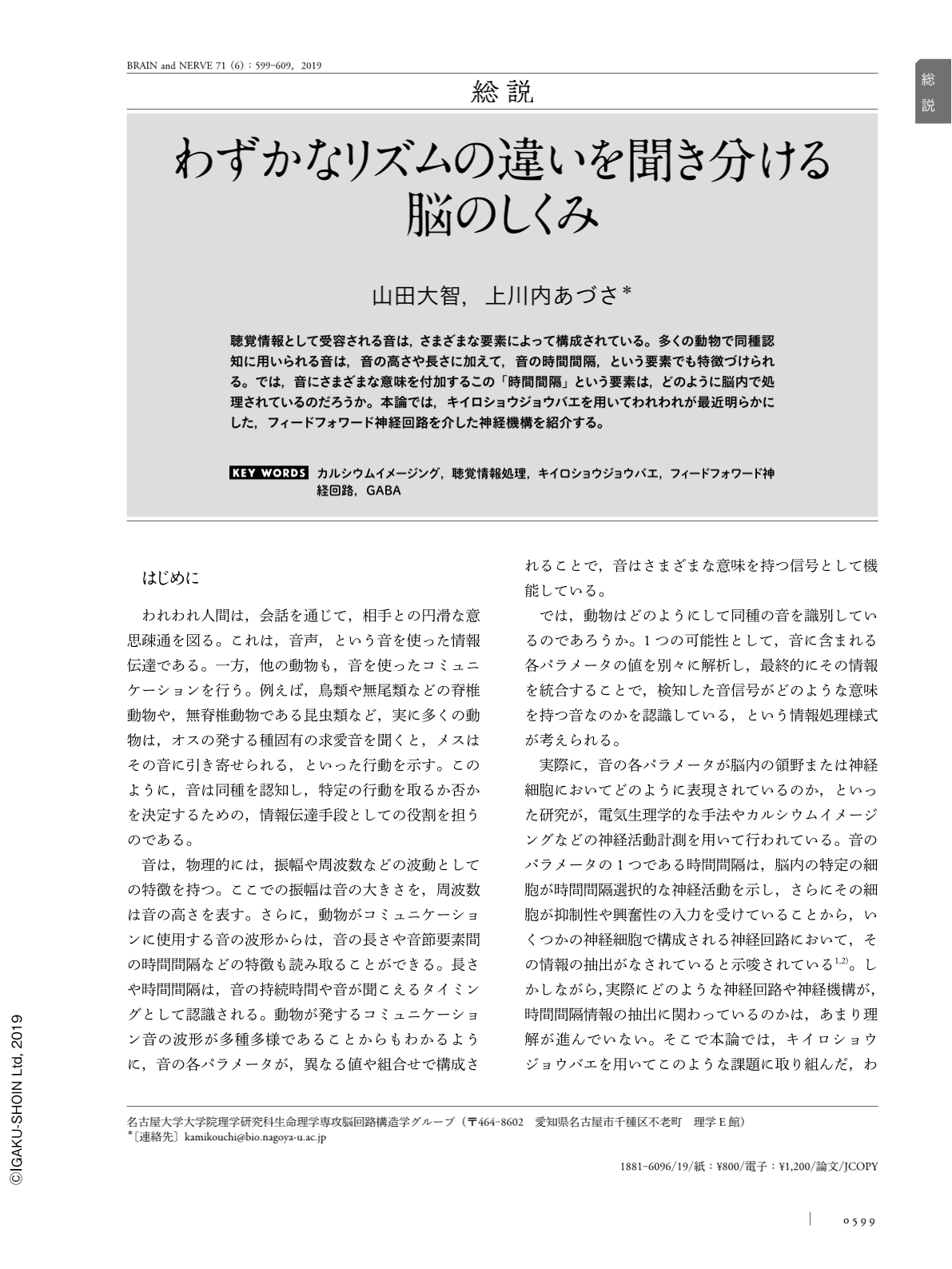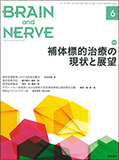Japanese
English
- 有料閲覧
- Abstract 文献概要
- 1ページ目 Look Inside
- 参考文献 Reference
聴覚情報として受容される音は,さまざまな要素によって構成されている。多くの動物で同種認知に用いられる音は,音の高さや長さに加えて,音の時間間隔,という要素でも特徴づけられる。では,音にさまざまな意味を付加するこの「時間間隔」という要素は,どのように脳内で処理されているのだろうか。本論では,キイロショウジョウバエを用いてわれわれが最近明らかにした,フィードフォワード神経回路を介した神経機構を紹介する。
Abstract
Many animals use acoustic information to recognize conspecifics. The time interval between acoustic elements is a property that characterizes a particular sound. In vertebrates and invertebrates, a specific time interval between acoustic elements is represented as a selective pattern of neuronal activity. Excitatory and inhibitory inputs to the auditory neural circuit generate this selectivity. However, the direct causal link between these inhibitory systems and the behavioral response of an animal to a sound with a specific time interval remains unknown. To tackle this question, in this study, we used Drosophila melanogaster, which has a courtship song with a species-specific time interval. Song information in these flies is transmitted along the main songrelay neural pathway, through which the time interval selectivity of the neurons is sequentially transformed. Herein, we examined the mechanism that shapes the selectivity of the key secondary auditory neurons in this pathway, AMMC-B1. Calcium imaging experiments suggested that AMMC-B1 neurons receive GABAergic inhibitory inputs. Anatomical analysis suggested that two GABAergic neurons configure the feed-forward pathways onto the excitatory pathway between AMMC-B1 neurons and their upstream neurons. Calcium imaging and behavioral analysis suggested that each GABAergic neuron shaped the response selectivity of AMMC-B1 neurons, and suppressed the songresponse behavior of the flies. Based on these results, it therefore appears that GABAergic inhibitory feed-forward pathways shape the tuning pattern of AMMC-B1 neurons and adjust the fly's behavioral response to the song.

Copyright © 2019, Igaku-Shoin Ltd. All rights reserved.


